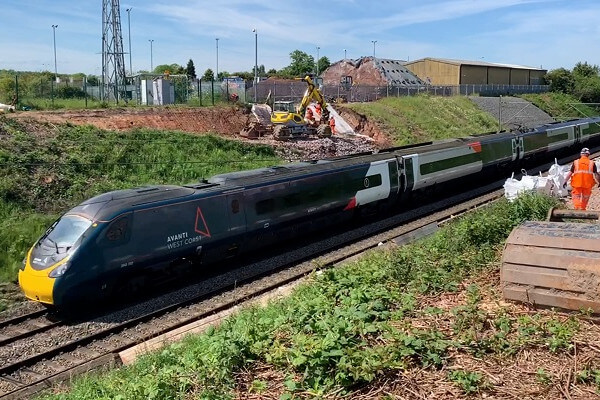Travel Advice for West Coast Main Line with Tracks Set to Exceed 50°C

Rail passengers using the West Coast main line between London Euston and Scotland are being advised to plan ahead with heatwave conditions expected to impact journeys next week.
The Met Office has issued an amber weather warning for extreme heat from Sunday (17 July), with temperatures forecast to reach 37°C in London on Monday and Tuesday.
Ahead of this, Network Rail’s extreme weather action teams (EWATs) are preparing all the tools at their disposal to keep passengers and freight safely on the move.
However, the hot weather is likely to cause delays so passengers are being given an early warning to regularly check National Rail Enquiries at www.nationalrail.co.uk before they set off on their journey.
James Dean, Network Rail’s West Coast South route director, said: ‘Keeping passengers moving is always our top priority. But we want people to be prepared. If the soaring temperatures do lead to us having to put in place slower speeds for safety reasons, please bear with us while our engineers work to fix the problem. It may mean some journeys take longer.
‘For those who must travel by rail, we’d remind people to carry some water with them so they can stay hydrated, and always check before travelling so they know exactly what to expect.’
The hot weather, particularly direct sunlight, can cause track temperatures to reach more than 50°C.
Steel rails absorb heat easily and tend to hover around 20 degrees above the surrounding air temperature.
When steel becomes very hot it expands and rails can bend, flex and, in serious cases, buckle.
To prevent this from happening some sections of rail are painted white to reflect the sun’s rays and stop the steel from getting too hot.
Trains also run at slower speeds to put less strain on the rails.
The network of 25,000 volt overhead electric cables which power trains on the West Coast main line is also susceptible to high temperatures.
They can cause the steel wires to overheat and then hang too low – getting caught on passing trains and knocking out their electricity supply.
Last year a system of 60 solar-powered weather stations were also installed to monitor extreme conditions in real-time so railway staff can keep more trains moving instead of imposing region-wide speed limits.
Right now across Network Rail’s North West and Central region they’re being used to predict where the railway teams should be deployed.
By using the new technology, Network Rail engineers are ready to respond to any issues caused by the heatwave and impose speed limits in local areas if they are needed.
Railway staff are ready for this challenge on the West Coast main line between Crewe and London Euston.
Passengers are advised to check before they travel at www.nationalrail.co.uk in case trains do need to run more slowly.
For more information on how Network Rail deals with the hot weather visit www.networkrail.co.uk/how-we-prevent-tracks-from-getting-too-hot/.
